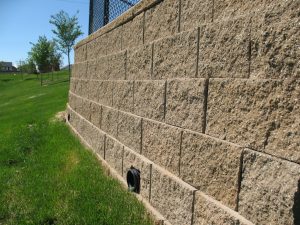Environmental Advantages
Geopolymer concrete is known for its excellent environmental performance. It significantly reduces the carbon emissions associated with traditional cement production. Unlike conventional concrete, which uses Portland cement as a binder, geopolymer concrete employs industrial by-products such as fly ash, slag, and silica fume. These materials are abundant and typically end up as waste in landfills. By utilizing them in geopolymer concrete production, we can reduce greenhouse gas emissions and conserve natural resources.
Superior Strength and Durability
Geopolymer concrete exhibits impressive strength and durability properties. It offers higher compressive strength and lower shrinkage compared to traditional concrete. The chemical reaction that occurs during geopolymerization creates a three-dimensional network, resulting in enhanced structural performance. Geopolymer concrete also has better resistance to chemical attacks, making it suitable for harsh environments such as coastal areas or industrial settings.
Superior Strength and Durability
Geopolymer concrete exhibits impressive strength and durability properties. It offers higher compressive strength and lower shrinkage compared to traditional concrete. The chemical reaction that occurs during geopolymerization creates a three-dimensional network, resulting in enhanced structural performance. Geopolymer concrete also has better resistance to chemical attacks, making it suitable for harsh environments such as coastal areas or industrial settings.
Fire and Heat Resistance
Geopolymer concrete possesses excellent fire resistance properties. It has a higher resistance to heat transfer compared to conventional concrete, making it an ideal choice for fire-resistant structures. In the event of a fire, geopolymer concrete maintains its structural integrity for a longer duration, providing valuable time for evacuation and fire suppression.
Reduced Carbon Footprint
As mentioned earlier, geopolymer concrete significantly reduces carbon emissions. The production of traditional Portland cement is responsible for a significant portion of global carbon dioxide (CO2) emissions. Geopolymer concrete, on the other hand, emits considerably less CO2 during its production process. By adopting geopolymer concrete in construction projects, we can contribute to mitigating climate change and achieving sustainable development goals.
Energy Efficiency
Geopolymer concrete offers energy-saving benefits throughout its lifecycle. The manufacturing process of geopolymer concrete consumes less energy compared to conventional concrete, mainly due to the lower temperatures required for curing. Additionally, geopolymer concrete has excellent thermal insulation properties, reducing the energy consumption of buildings by minimizing heat transfer through walls and floors.
Resistance to Alkali-Silica Reaction (ASR)
One of the major challenges in traditional concrete is the alkali-silica reaction (ASR), which can cause cracking and degradation of the structure. Geopolymer concrete, however, is highly resistant to ASR due to its alkaline nature and the absence of calcium hydroxide. This characteristic ensures the long-term durability of geopolymer concrete structures, minimizing the need for costly repairs and maintenance.
Versatility and Design Flexibility
Geopolymer concrete offers designers and architects a wide range of possibilities. It can be molded into various shapes and sizes, allowing for intricate designs and architectural innovation. The versatility of geopolymer concrete enables the creation of aesthetically pleasing structures without compromising on performance.
Conclusion
Geopolymer concrete represents a groundbreaking innovation in the construction industry. Its environmental benefits, superior strength and durability, fire resistance, and reduced carbon footprint make it a compelling alternative to traditional concrete. As sustainable practices and eco-friendly materials gain prominence, geopolymer concrete emerges as a promising solution for achieving a more sustainable built environment. By embracing geopolymer concrete, we can mitigate the










